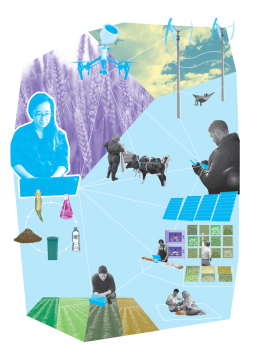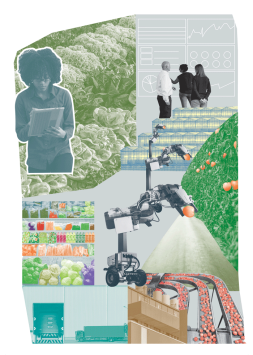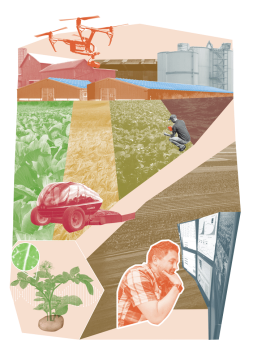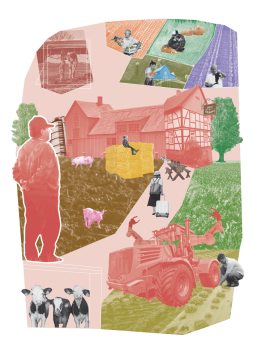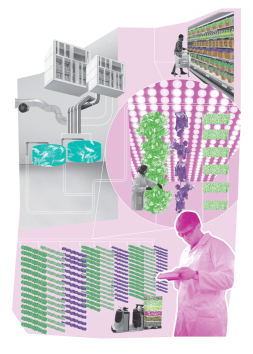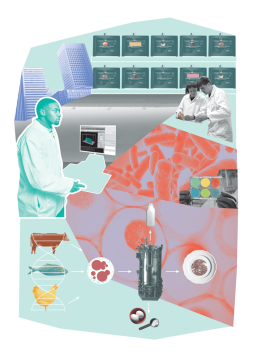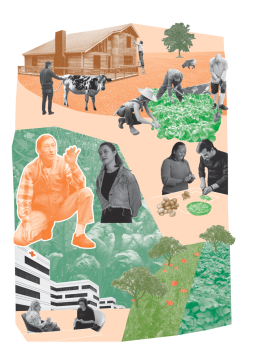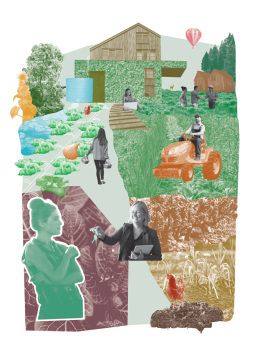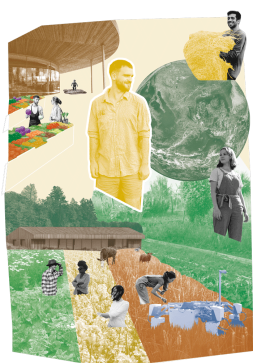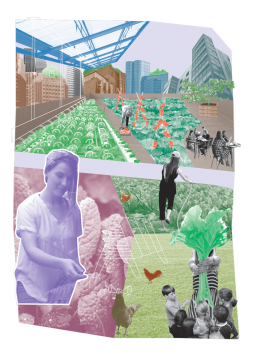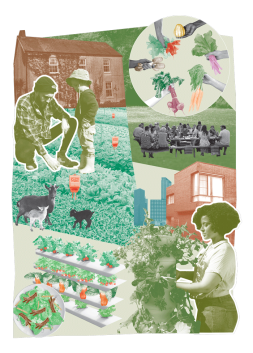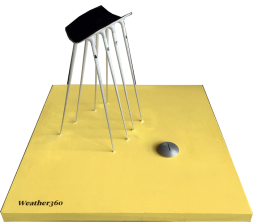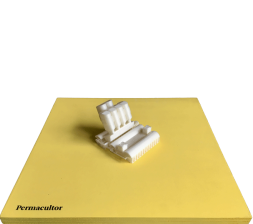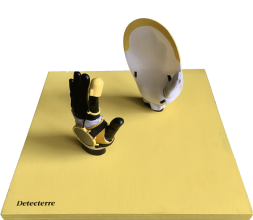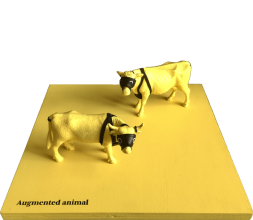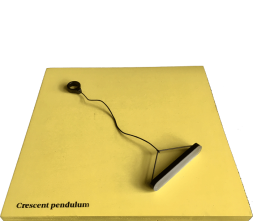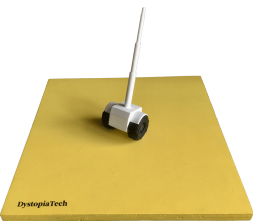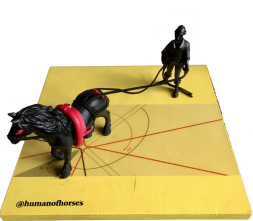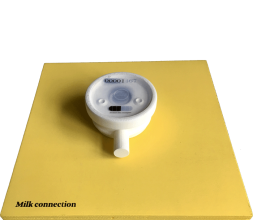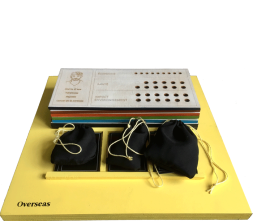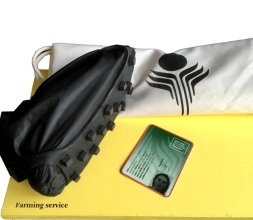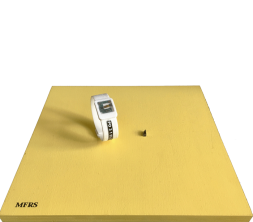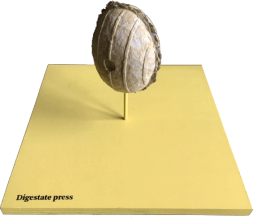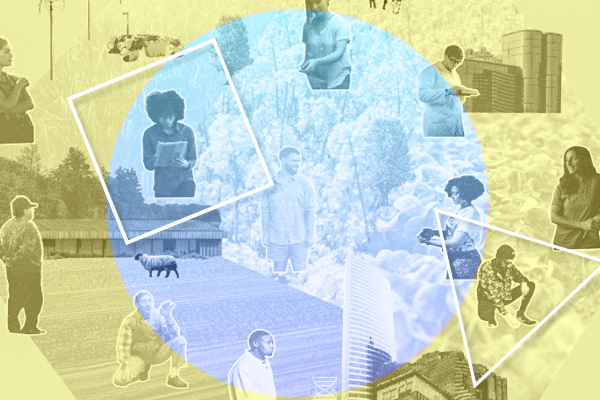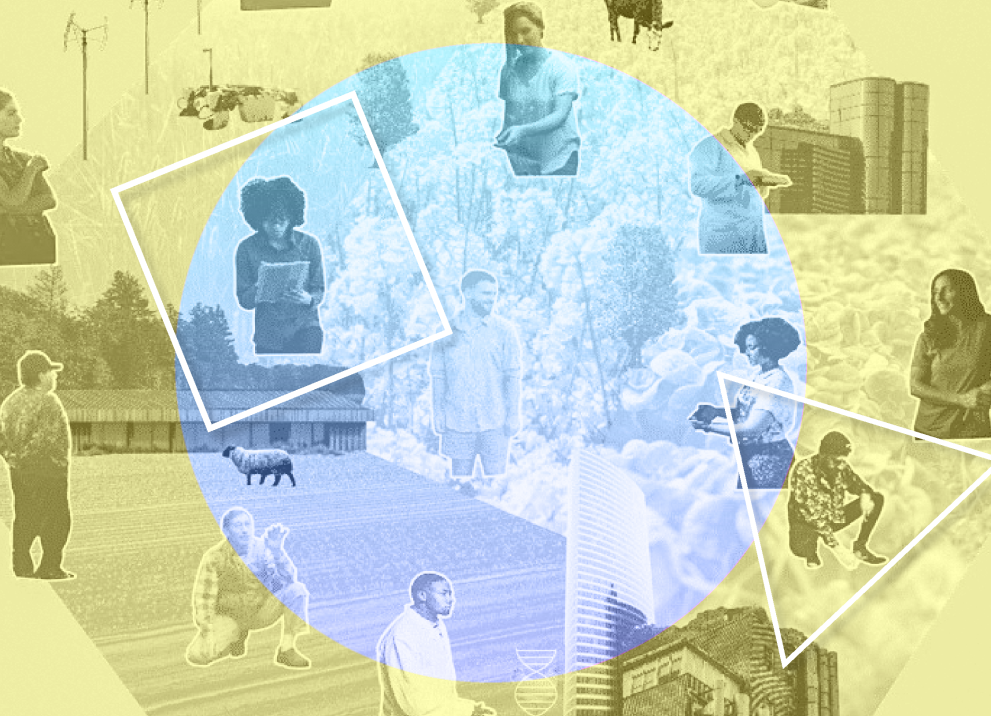
The Common Agricultural Policy puts farmers at the core of its actions. The 2017 Commission Communication “The Future of Food and Farming” credits farmers with guaranteeing food security for over 500 million European citizens and being the first stewards of the natural environment. It fashions the role of the policy to “bring out the very best from the Union’s farm sector and rural area (…) and to support farmers in anticipating and dealing with future relevant challenges and developments.”
There is a considerable amount of literature detailing the future challenges for agriculture and food production and consumption, especially regarding climate change and resource scarcity, technological change, infrastructural issues and food demand/dietary habits (including SCAR reports, JRC studies and research projects). However, there is less consideration of the question of who will be the farmers in the medium- and long-term future who will be dealing with those challenges. The fact that only 5.6 % of EU farmers are under 35 years old suggests that there could be much more disruption than continuity ahead in the farming profession.
The aim of the foresight study is to identify possible future professional roles of farmers in 2040 and to explore resulting potential implications for relevant EU policies.
A mix of foresight and design approaches
The study will combine different methodological approaches and is exploratory in nature. In order to achieve its goal, the study will:
- Identify relevant drivers of change and analyse how these drivers might influence the role of farmers in the future
- Generate insights into farmer’s views on possible future developments
- Explore possible consequences the changing farmer roles may have for relevant EU policies
In order to accomplish the objectives a highly participatory approach will be taken involving key players and stakeholders.
The foresight study Farmers of the Future sets out to explore the future professional roles of farmers as we move towards the year 2040, using a people-centred approach. The aim is to raise awareness and to open discussions about the future of farmers and farming in the EU and the policies needed to shape it.
Farmers2040 – Farmer Profiles
The EU farmer landscape 2040 was developed in several workshops, using the 2020 farmer profiles as an input, and exploring the impacts of the set of 14 megatrends. Out of these discussions, and building on the review of various studies on the future of agriculture and food , a narrative was developed to set the scene for the 2040 farmer profiles. It shows the possible impact of drivers of change and megatrends on EU agriculture, and provides a context in which diverse motivations, business models and farm activities might evolve, or be created.
12 Future Farmer Profiles
ADAPTIVE FARMER – THEMES AND NETWORKS
2040 Farmer Creative, curious, open, resourceful, agile, networked
Farm description Multifunctional but coherent farm run by independent business partners
CORPORATE FARMER – BRANCH OPERATIONS MANAGER
2040 Farmer Manager, career prospects in a large corporation
Farm description Business unit contributing to functioning of the corporation – providing ingredients for production of final products
INTENSIVE FARMER – PRECISION FARMING
2040 Farmer Innovative, efficiency-driven, technophile, autonomous
Farm description Large, efficient and specialised farm holding
PATRIMONIAL – ON THE FENCE
2040 Farmer Conservative, traditional, surviving
Farm description Varying business models, locked-in due to past investments, reliance on subsidies/off-farm income
CONTROLLED ENVIRONMENT – SOIL-LESS HIGH-TECH
2040 Farmer Technophile entrepreneur
Farm description Vertical farming in the cities and on outskirts (soil-less)
CELL – ALTERNATIVE FOODS
2040 Farmer Biotech entrepreneur
Farm description Creating synthetic protein-based food/ingredients
SOCIAL CARE – HEALTH AND PEOPLE
2040 Farmer Service- and society-oriented, empathy, open-minded
Farm description Farms providing food and social/healthcare services
LIFESTYLE – CHANGE FOR A NEW LIFE
2040 Farmer Quality of life, self-actualisation, cross-cultural competence, flexibility
Farm description Migrants from urban areas starting (part-time) agricultural activity in ‘farm as a service’ context
REGENERATIVE – A BIGGER ECOSYSTEM
2040 Farmer Strong environmental and social motivation, holistic approach to agriculture
Farm description Environmental sustainability is the guiding principle, going beyond the sustainability mainstream
URBAN – ON URBAN SOIL
2040 Farmer Entrepreneur, social responsibility
Farm description Soil based farming in urban environment, open field and greenhouses, on the ground or roof-top
SERIOUS HOBBY – PASSION FOR LEISURE
2040 Farmer Persistent, focused on mastery of activity
Farm description Small farms, the objectives focus on occupation rather than profitability
COMMUNITY-PROVISIONING – GROWING AND SHARING
2040 Farmer Care-giver, nurturer oriented to small, tight networks
Farm description Small farms, plots, gardens or home installations in urban or rural settings
Farming equipment from the future
Design objects
In order to stimulate the conversations and the imagination around the topic of the Farmers of the future, the JRC turned towards Design as a means to make the future more tangible. Previous projects carried out by the JRC demonstrated the value of using physical design objects to facilitate debates on current and upcoming issues.
The JRC chose to collaborate with the School of Art and Design of Saint-Etienne, France, for its renowned research and product design program. Around 15 design students
and their staff were involved in the work. The course lasted for a period of three months, from April to June 2019.
Students who took part in the work were highly motivated, as the course was not mandatory.
Weather360 by Charlotte Gofette
TECH-FARMERS DEPENDENT ON DECISION-MAKING OBJECTS. AN ANTENNA AND A SENSOR STATION.
The Chinese company Agri-Jishu offers «Weather 360» a decision support service for farmers. It consists of an antenna, supported by eight feet, corresponding to the different types of data collected by the company: Social, farmer’s relationships, health, farm productivity, finance, political developments, weather and soil conditions.
Every day, those data are collected, analysed and summarized to make the farmer’s life simple and serene. Thanks to the « Weather 360 » device, the farmer doesn’t need to make any decision about his daily tasks. Instead, every day, the sensor station prints the instructions the farmer needs to follow, ranging from when to get up, the daily farming schedule (details on fertilising, harvesting times etc.), to the appointments and social interactions, and providing information on the health status, the productivity rate, the state of the finances, the government decisions about farming, the soils conditions by sector and the daily weather.
Permacultor by Cesar Lott
COMBINING PERMACULTURE AND DIGITAL TOOLS. AUTOMATED SEED DRILL.
This tool is addressed to farmers who are seeking to free themselves from pesticides and synthetic fertilisers, and move to a more sustainable type of farming: the permaculture.
This farming method, inspired by biodiversity, is still limited to small plots because it requires a permanent manual care, and tools and philosophy were based on low-tech concepts. Combining permaculture with more sophisticated, modern production means would enable farmers to build on the high yield and inherent quality of production and to tremendously increase productivity.
The new tool would be equipped with a permaculture seed drill and would include planting schemes suitable for every environment. The tool would allow the farmer to cover a larger area while making the work easier. By selecting appropriate varieties and symbiosis for a specific type of land, considering the soil quality, main weather conditions, agricultural forecasts etc., the farmer would only have to care about harvesting. The subtlety that makes the richness of permaculture would then be domesticated and optimized, offering an almost self-managed environment, thanks to the machine?
Detecterre by Alexis Guidet
RAISING FARMERS’ AWARENESS OF THE LIVING ORGANISMS IN THEIR SOIL. PAIR OF GLOVES FOR A MICROBIOLOGICAL ANALYSIS OF THE SOIL.
Through intensive agriculture, mechanisation and automation, in combination with changing climatic conditions, farmer have unwillingly impoverished their soil, destroying the soil ecosystem, and lost contact with the environment.
Faced with this ecological crisis, a couple of former agricultural engineers created Terrinov in 2038, a company aiming at reconnecting farmers to the environment without rejecting technology that became essential to them. The first product of the company, Detecterre, represents a first step towards strengthening farmers’ awareness of living elements they are handling.
These gloves analyse the soil, by electric and analogue means, to precisely determine the required actions for its chemical, biological and mineral reactivation and ensures the monitoring by regular analysis cycles in line with a more sustainable production.
Building on the success of this first tool developed, the company intends to extend its product range with similar tools allowing farmers to reaffirm their relation with their environment.
Augmented Animal by Ines Le Menec
NEW TECHNOLOGIES AT THE ANIMAL’S SERVICE. KIT INCLUDING SEVERAL SENSORS CONNECTED TO A PAIR OF GLASSES.
Ageekulteurs represent a new generation of farmers in 2040. They grew up with the internet and with the new digital omnipresent technologies, video games and artificial intelligence. Passionate about technological innovations, they perfectly live in this connected world. Technological devices are everywhere on their farms and artificial intelligence supports their decisions. Thanks to automation, the farmer can dedicate his time to the livestock. However, the new generation lost the “farmer’s eye” that is no longer stimulated. They do not understand the animal language anymore, therefore they are not able to see when it needs care.
To better understand the animal, they start to digitalize it with devices that would give the animal the capacity to use the technology to communicate with the farmer; it becomes an augmented animal, almost humanized.
With the sensors transplants and other technologies, the animal indeed becomes a cyborg. Its status changes, it is no longer a property to handle, but has now more responsibilities. The roles switch, the animal is more like an employer as it uses the farmer to be taken care of. The farm turns into a video game in which the farmer has to stay by his livestock’s side and the animals, with the machines, control the quantity, the quality and the profitability of the farm.
Crescent pendulum by Charlotte Marx
PASSING ON ANCESTRAL KNOWLEDGE, REVIVED BY A NEW MYSTICISM-AWARE GENERATION OF FARMERS. PENDULUM.
The Crescent Fellowship is a group of European farmers, caring about farming in an environmentally conscious way. Created in after a groundwater pollution scandal in 2025 involving a weed killer, the fellowship rejects the intensive agriculture and promotes the use of manual tools in order to reconnect man and nature, while combining ancestral and modern techniques. Environmental and spiritual aspects of agriculture are the most important concerns of the Fellowship, as well as the community and sharing spirit that unites them. Plants are considered like individual entities, they are respected for their energy and their properties. The most important tool is the pendulum. It builds on ancestral farming tools. It is traditionally used by dowsers to find water. Here, it is used to find the most favourable land to cultivate crops in order to improve the growth and strength of the plants but also to receive all the natural elements from the surrounding. The object is based on mineral properties and electromagnetic waves. The handle includes a battery sending an electric charge through a cable and then in the quartz. By penetrating the stone, the electricity produces a slight sound that makes invisible currents perceptible.
Dystopia Tech by Lucie Marchois
“IT IS TIME TO GIVE THE FARMERS THE FLOOR, IN A SOCIETY WHERE STATISTICS AND YIELS HAVE MORE VALUE THAN THEIR THOUGHTS AND LIVES!”. AUTONOMOUS ROBOT.
In 2040, the digital era is at its peak. New technologies are available and European farms equip themselves with the most innovative machines. A ‘tech law’ allows the government to collect production data via these ultra-connected machines to guide agriculture policies, resulting far-reaching regulations in terms of agriculture production, including expropriation of farm land to ensure environmentally sustainable food production .
Yet, the increase of farmers’ suicides starts to worry; since 2020 the suicide rate has increased by 38%.
The Dutch activist association Menselijk, defending the farmers, decided to set up an autonomous vehicle, allowing farmers to speak up to stop this development, caused, according to them, by a lack of communication. This microphone-robot, driving force of the farmer’s voice, is directly linked to the community radio of the association. It broadcasts live the farmer’s words on every streaming platform. Menslijk has made the forgotten farmers heard all around the world and gives the freedom of expression its meaning back.
Human horses by Estelle Pom
VLOGGING-FARMING ERA. SUBJECTIVE ACTION CAMERAS.
While investments in agricultural mechanical equipment and resulting debts stifle the farmers, the draft horse offers an ecological perspective, with a rare economic stability. However, at the dawn of 2040, draft horses are threatened by extinction.
Yet, being digital natives and attracted to new types of relations between humans and animals and to the agriculture of soil fertility, thousands of young people are converting to animal energy. Thanks to the technical knowledge available on the internet, these farmers-vloggers are aware, and quickly operational.
Augmenting the animal and themselves, the farmers make vlogs (contraction of “video” and “blog”) that enable them to analyze the horse condition during a carriage session, to see their mistakes and to mime their gesture. The immersion is complete and influences many consumers, enthusiasts, professionals and other trades to converge on animal energy. Via the Youtube channel @humanofhorses farmers-vloggers record and upload playlists of educational videos revealing the power of the ultra-modern, ultra-light, ultra-mutable animal-powered transportation. The farmer-youtuber makes a living from two economies: he is a farmer in a real material community and manages the content of an online, immaterial community
Milk connection by Pauline Liogier et Anne-Caroline Nizou
FARMERS COME UP WITH A NEW WAY OF MILK DISTRIBUTION AND CONSUMPTION. MILK METER FROM THE CONNECTION KIT TO THE NETWORK.
In 2040, dairy farmers become active to change the supply chain they are part of, going against low income, overproduction, unbearable isolation in rural areas, excessive exploitation of cattle, too many intermediaries between them and the consumers, and an environmental emergency. To solve these issues, they establish a new way of selling milk.
Now, you can link your home to the nearest dairy farm thanks to a new pipe network. In urban areas, there is a farm for each sector, each feeding several homes. You can buy your kit from Milk Connection©. This kit consists in milking machines, some flexible connector pipes, a spigot, a tap and a milk meter (as represented by the model). The cow milk is produced at the farm, then it is stored and pasteurized in a cistern. After the quality control, the milk is sent to the domestic reservoir via the network and flows from the tap just like regular water. Meanwhile, the milk consumption is quantified by the milk meter. Many new kitchen utensils have been designed to change the milk in butter, cream, yogurt and other dairy products of the everyday life; packaging waste is reduced.
Overseas by Alice Koté
WORKING CONDITIONS OF OVERSEAS WORKERS. GAME.
This project is part of a study on 2040 French overseas territories (French Guiana, Martinique, Mayotte, Reunion island and Guadeloupe).
The game Overseas is dedicated to overseas farmers and is meant to start a debate on their working conditions, to find solutions to improve their future. More widely it is meant to raise awareness of more sustainable and environmentally friendly forms of agriculture, which could offer better conditions to farmers.
Farming service by Rosalie Blanc, Romain Joly, Lucas Macabéo, Valentine Maupetit
A NEW SOCIAL SYSTEM FOCUSED ON URBAN FARMING (UFA). KIT, INCLUDING A JUMPSUIT, OVERSHOES, RAINCOAT, HAT, BAG, NOTIFICATION.
Climate change brought food production to centre stage of citizens and policymakers. Citizens initiatives demanded a change of the economic system, targeting all the activities which were not essential to human survival and advocating the return to an eco-aware agricultural world. Among numerous reforms, the move to local food chains became central.
To implement that change, more food needs to be produced, citizens need to be more aware of agriculture and many more hands were needed to grow food. As a result urban farming was extended and the Agricultural Service was established.
The ministry for urban farming dedicated areas to urban farming and initiated a 6 months Urban Agricultural Service, mandatory for people over the age of 16. The labour code was reformed, which henceforth stipulated that a fifth of the working time must be spent on working in Urban Agricultural Farming Areas (UFA). The UFA’s operation is based on a formula created by the department: the UFA working time is transformed into a market value, allowing the citizens to enjoy the crop in a personal capacity. The Ministry in charge provides a kit including clothes and accessories to make the transition from the urban life to the farm efficient.
MFRS by Margot Constantin
SURVEILLANCE OF MIGRANT WORKERS IN THE FARMS. RFID CHIP AND SURVEILLANCE WRISTBAND.
MFRS (Migrant Farmworkers Registration System) is an identification, surveillance and localization system for the farmers’ workforce. It is a provocative design that offers tools to farmers to list each migrant farmer of his area. The tracing technology enables the farmer to enter in the workers privacy, track his daily activities and health status and also to maximise their recruitment.
This project is meant to denounce the lack of considerations or difficulties migrant farmers currently have to face (that it be the recruitment, and the working and living conditions once hired). It is meant to call out for an improvement of the current situation, to ensure this scenario does not become reality.
Digestate Press by Lucas Rivière
FARMERS AS ENERGY PRODUCERS AND MANUFACTURERS. ENDO: BIRDHOUSE MADE OF DIGESTATE.
The digestate press offers the farmer an opportunity to diversify his activity ; the anaerobic digestion waste – being the methane coming from the animal’s effluents and transformed into energy, is recycled into objects.
This scenario aims to question how this new type of diversification can modify the relation between humans and animals.
The birdhouse Endo (in the picture), is an example of the potential of the Digestate Press machine. The pressed digestate offers a natural thermal insulation that can last during a whole winter. Then it naturally degrades and becomes a shelter for insects. It reminds us of the necessity to preserve the biodiversity of our countryside.
Details
- Publication date
- 16 December 2020
- Author
- Joint Research Centre
- EU Policy Lab tags

